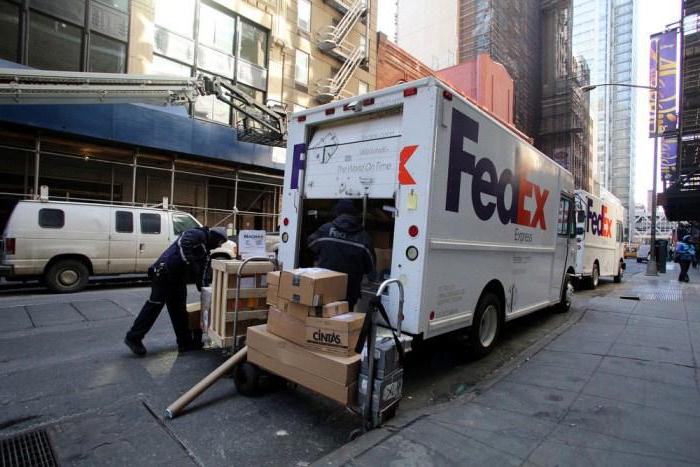All expenses associated with the acquisition of goods and stocks are recorded as a separate item in the balance sheet. Subsequently, they should be written off to the cost or total cost of the organization for the current period.
Essence
In accounting, transportation and procurement expenses include costs associated with the delivery of materials (paragraph 70 of the order of the Ministry of Finance No. 119n), including:
- loading operations;
- transportation;
- travel allowance;
- storage of materials at railway stations, marinas;
- warehouse complex, including the costs of maintaining procurement points;
- loan fee;
- shortage and damage;
- margins, allowances.

Accounting for transportation and procurement costs is carried out in one of the following ways:
- directly in the cost of materials;
- on account 15 "Procurement of raw materials" separately;
- on a separate sub-account connected to account 10 “Materials”.
The selected method is written in accounting policies.
Postings
If the organization relates transportation and procurement expenses to the actual cost, then the following transactions are made:
- D-10 K-t 60 (20, 75) - receipt of materials.
- D-10 K-t 60 (76, 26) - the costs are charged to the cost.
Let us consider how transport and procurement costs are separately taken into account.
Score 10:
- D-10 K-60 (20) - receipt of raw materials.
- Dt 10 Kt 76 (23) - TZR taken into account.
Score 15:
- Dt 15 Kt 76 - receipt of materials at contractual cost.
- Dt 15 Kt 76 - accounted for the cost of transportation in actual cost.
- D-10 K-15 - posting of materials.

The deviation of values is also written off at the time of acceptance for accounting of raw materials:
- D-16 K-t 15 - the deviation of the actual value from the accounting.
- Dt 15 Kt 16 - excess of price over actual cost.
If transportation and procurement costs are taken into account separately, the materials should be divided into groups. The costs will be distributed among them. Materials will be accounted for at discount prices:
- approved by the organization;
- spelled out in the contract;
- the actual cost of the past period.
If the price deviates from the cost by more than 10%, it must be checked.
If TZR are accounted for separately, they must be written off at the end of the month by posting D-t 20 (25) K-t 16 (10).
Crushing costs
Let us consider in more detail how transport-procurement costs can be distributed:
- The percentage of costs does not exceed 1/10 of the cost of all materials: all expenses accepted for accounting in the current period are fully allocated to materials debited to accounts 20, 23 and 91-2.
- TZR does not exceed 5% of the cost of materials: the amount of expenses is fully debited in the current period to the cost of imported raw materials.
- According to the average percentage of expenses.
- Percentage at the beginning of the reporting period. The overstatement or understatement of the amount of expenses in the current month should be adjusted in the next month.
- According to the standards. Amounts of expenses exceeding the approved values are taken into account in the next period.

Calculations
As indicated, transportation and procurement costs in some cases account for the average percentage. Let's consider in more detail how to calculate it:
- (Balance of transportation costs at the beginning of the period + Sum of expenses for the delivery of materials in the current month): (Cost of inventory at the beginning of the month + Cost of incoming materials) x 100%,
or:
- Average% of written-off MPZ: The book value of inventories.
Example 1
OJSC is engaged in the manufacture of metal products. The company keeps records of materials on accounts 15 and 16. On 01.02, the balance sheet included:
- cf. 10: 10 tons of metal worth 28,000 rubles .;
- cf. 16: the balance of TZR in the amount of 3000 rubles.
During the month, OAO bought 50 tons of metal worth 168,150 rubles. The shipping cost of this batch is 17.7 thousand rubles.In the same period, 35 tons of metal was transferred to production. Postings:
- Dt 15 Kt 60 - 142.5 thousand rubles. - receipt of metal.
- Dt 19 Kt 60 - 25.65 thousand rubles. - VAT included.
- Dr. 68 Set 19 - 25.65 rubles. - A tax on purchased raw materials has been deducted.
- D-10 K-15 - 140 thousand rubles. - metal is capitalized.
- Dt 15 Kt 60 - 15 thousand rubles. - reflected shipping costs.
- Dt 19 Kt 60 - 2.7 thousand rubles. - accounting tax from TZR.
- Dt 68 Kt 19 - 2.7 thousand rubles. - tax deduction for TZR.
- Dt 16 Kt 15 - 17.5 thousand rubles. (142.5 + 15 - 140) - the difference between the price and the cost is written off.
- Dt 20 Kt 10 - 98 thousand rubles - the metal was transferred to production.

The cost of raw materials to be written off in February is calculated as follows:
- 2.8 - 10 + 2.8 x 50 = 168 thousand rubles. - the cost of the metal, taking into account the initial balance.
- 3 + 17.5 = 20.5 thousand rubles. - the amount of TZR, including the initial balance.
- 20.5 / 168 x 100 = 12.2% - the average percentage.
TZR to be written off in February (98 x 12.2% = 11.956 thousand rubles) are taken into account by posting D-t 20 Kt 16.
Features
How to distribute storage costs for several types of materials, provided that they were delivered by one carrier? For such cases, the organization can develop a separate methodology for cost accounting and consolidate it in the accounting policy.
For example, you can specify that upon the delivery of dissimilar factory outfits with one vehicle, TZR will be distributed in proportion to the quantity, weight or their volume. If you are supplying heterogeneous groups of materials (some are measured in pieces, others in tons), you must either bring all units to a single denominator, or the costs are distributed between the groups, for example, in proportion to the number of places in the vehicle. The next step is to distribute the costs of units directly proportional to the units operating within each group.

Example 2
One hundred sheets of sheet metal and two hundred meter corners were delivered to the organization with one car. Transportation and procurement costs amount to 7 thousand rubles. excluding tax. In order to distribute expenses, the accountant brought all units to kilograms. The weight of one sheet is 60 kg, one meter of a corner is 15 kg.
Total weight: 60 x 100 + 15 x 200 = 9 thousand kg.
Costs for the delivery of metal are: 7 x 6: 9 = 4.667 thousand rubles.
The cost of delivery of the corner is: 7 x 3: 9 = 2,333 thousand rubles.
Tax accounting
There are three ways to take into account in NU TZR. The chosen option should be approved in the accounting policy and applied for at least two years.
Option 1. Write off all inventory costs
If the entire amount of expenses relates to one item of materials, then they are fully included in the cost of this item. For example, if one item of raw materials was delivered by car, the entire amount of transportation costs is included in these stocks. If the costs relate to several items of raw materials, then they are distributed in proportion to the value of stocks.
Example
The transport company delivered the organization materials (0.3 tons of nails and 0.5 tons of screws) in one car. The cost of the service amounted to 3 thousand rubles. The price of raw materials: 30 rubles / kg of nails, 10 rubles / kg of screws.
Shipping cost is allocated to raw materials:
- 3 x (0.3 x 30): (0.3 x 30 + 0.5 x 10) = 1.929 thousand rubles. - nails;
- 3 - 1.929 = 1.071 thousand rubles. - screws.

Option 2. TZR are accounted for separately, and at the end of each period are distributed between goods and stock balances
The calculation of the amount of expenses is carried out separately for each product according to the following formula:
- TZR = Cost of materials in production x (Balance of TZR at the beginning of the month in the warehouse + the sum of received TZR for the current month): (Cost of materials released to production + Cost of inventory at the end of the period).
In the Tax Code of the Russian Federation, this method is provided only for determining the amount of costs for goods sold. But its use in relation to stocks does not contradict the law, does not lead to distortion of information.
Option 3. Applies only to goods sold
All costs except shipping costs are debited to other expenses at a time. In particular:
- payment of insurance services - on the date of payment of the premium;
- duties - on the date of payment;
- remuneration to the intermediary - on the day of transfer of funds from the account.
Transportation costs are expensed as expenses related to goods sold in the current period. The amount is determined by the following formula:
- TZR = Cost of goods sold x (TZR at the beginning of the month + TZR of the current period): (Cost of goods sold + Cost of the balance of goods in stock).
Under the simplified tax system, TZRs are charged to tax expenses on a date that comes later, whether it is acceptance for accounting or payment to the supplier. The release of raw materials into production for NU does not matter.
Example 3
In June 2015, a trade organization purchased inventories in the amount of 708 thousand rubles. The costs of their delivery amounted to 23.6 thousand rubles. The accounting policy provides that these costs are included in the cost. Postings:
- Dt 15 Kt 60 - 600 thousand rubles. - purchase value of raw materials.
- Dt 19 Kt 60 - 108 thousand rubles. - Reflected VAT.
- Dt 15 Kt 60 - 20 thousand rubles. - the cost of TZR.
- Dt 19 Kt 60 - 3.6 thousand rubles. - VAT for TZR.
- Dt 41 Kt 15 - 620 thousand rubles. - actual cost.

Example 4
We supplement the conditions of the previous example. Suppose the accounting policy of a conditional LLC provides that TZR are included in the costs of implementation. The actual cost is formed on account 41:
- Dt 41 Kt 60 - 600 thousand rubles. - the purchase price of raw materials.
- Dt 19 Kt 60 - 108 thousand rubles. - Reflected VAT.
- Dt 41 Kt 60 - 20 thousand rubles. - the cost of TZR.
Example 5
There is another way of accounting. TZR can be displayed on the sub-account of the same name, opened to account 44. Then these amounts are subject to write-off.
Suppose an organization delivers goods to a warehouse with its own transport. For half of 2015, the driver’s salary amounted to 150 thousand rubles, social security contributions - 5 thousand rubles, fuel and lubricants expenses - 20 000 rubles. Postings:
- Dt 44 Kt 70 - 150 thousand rubles. - the salary of the driver.
- Dt 44 Kt 69 - 53.4 thousand rubles. - payroll fees.
- Dt 44 Kt 02 - 5 thousand rubles. - accrued depreciation.
- Dt 44 Kt 60 - 20 thousand rubles. - expenses for fuel and lubricants.
If an organization delivers goods to its warehouse and customers with the same TS, it is very difficult to share costs. In such cases, it is recommended to prescribe in the accounting policy that all amounts will be debited to account 44 without further distribution.

Warehouse complex in non-trade organizations
The inventory accounting procedure is described in detail in the Methodological Instructions for the management of the plant. Excess raw materials are debited to account 41 at cost taking into account TZR. Non-trading enterprises can buy goods through divisions engaged in trading activities. Then TZR are recorded on account 44 in the subaccount "Commercial expenses".
Multidisciplinary organizations carry out several activities. Transportation costs of such enterprises are accounted for in Dt account 23, services rendered are debited from Kt 23 to Dt t (29) at cost. The organization can choose the method of cost allocation independently: in proportion to implementation, to the number of employees. The main thing is to approve this accounting procedure by an appropriate order of the head.
The method of writing off the remaining TZR amounts at the end of the period is determined by accounting. Most often, these expenses are transferred to D-90. The account balance 44 corresponds to the amount of expenses attributable to the balance of goods not sold at the end of the period. The amount of TZR at the end of the period is determined by the average percentage of costs for the reporting month.








